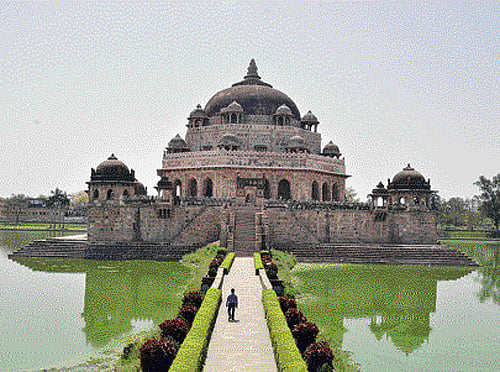
If you ask someone today about Sasaram, chances are he or she may tell you this is the place which gave India its first woman Lok Sabha Speaker Meira Kumar. Or, you may also be informed that this is the place which gave India its first Dalit Deputy Prime Minister Babu Jagjivan Ram, who represented Sasaram ever since the first election was held in 1952 and never lost the polls till he fought the last one in 1984.
But all this is modern history. The medieval history has its own glorious past. The great Afghan ruler Sher Shah Suri, who gave India its first national highway connecting Calcutta (now Kolkata) with Peshawar (now in Pakistan), was born in Sasaram.
The highway, also popularly known as Grand Trunk (GT) Road, while connecting Bengal with Delhi, passes through Sasaram, where a magnificent mausoleum is built as a tribute to the ruler who defeated Mughal emperor Humayun twice. First in 1539, and then again in 1540 before annexing the Delhi throne. The first battle Sher Shah won was in Chausa following which he was crowned Emperor. The next year he gave Humayun such a crushing defeat in the battle of Kannauj that Humayun escaped to Iran where he remained in exile for 12 years before returning to India.
Son of Hasan Khan Suri, the Jagirdar of Sasaram, Sher Shah was originally known as Farid. Hasan’s father Ibrahim belonged to the Afghan Sur tribe, which traded in horses. “Sher Shah succeeded his father as Jagirdar in 1520 AD. It is believed that in one of the hunting excursions, he single-handedly killed a tiger in the nearby Kaimur hills. Since then, Farid was known as Sher Shah,” informed a tourist guide.
In 1527, Sher Shah joined Babur’s army and then returned to south Bihar as Deputy Governor. He usurped Chunar and married the widow of Governor of Chunar Fort, Lad Malika. After defeating Humayun, Sher Shah conquered Malwa (1542), Ranthambore (1542), Raisin (1543) and Chittor (1544).
Prime attraction
Sasaram’s prime attraction is the 122 ft high tomb of Sher Shah Suri that stands in the centre of the town in an excavated lake. Situated nearly 170 km southwest of Patna and 128 km southeast of Varanasi, Sasaram (in Rohtas district of Bihar) is one of the oldest towns in India. It is believed the place got its name from King Kartavyavirya Sahasarjun and Sage Parshuram and it is also known as Sahas-ram.
The tomb of Sher Shah Suri is barely half a kilometre from the GT Road crossing through Sasaram. The construction work of this tomb was started by Sher Shah himself and completed by his son and successor Islam Shah some three months after the death of Sher Shah in 1545 A.D. The chief architect of this structure was Aliwal Khan.
The beautiful mediaeval structure is made of fine sandstone. Sher Shah Suri’s tomb lies in the middle of a man-made lake. This three-storeyed mausoleum is surrounded by large stone stairways leading to water of the excavated lake.
The upper terrace is enclosed by a tall wall surrounding the tomb. There are four octagonal domed chambers at four corners of this great tomb on the eastern side there is a grand doorway which is the only way to the tomb.
In the Quran, the octagon is symbolised with paradise and here this shape may be a metaphor to the concept. Multiple ornate chhatris (umbrella) adorn the double layered dome and the platform of the mausoleum. An inscription says it was completed on August 15, 1545. The architect of the structure Aliwal Khan and his war horse were also buried with the main Afghan ruler in the main chamber of the tomb.
Octagonal chamber
A beautiful causeway linked the tomb with the guardroom was later built in 1881. The main mausoleum building consists of a very large octagonal chamber surrounded by a wide verandah on all of its sides. The verandah is covered by a series of 24 small domes, each supported on arches and each corner of the verandah is provided with a cupola.
The main tomb chamber is supported by beautiful arches and it rises about 22 feet above the verandah surrounding it. It is one of the largest domes in India. Inside the tomb there are stone jalis (ventilator) of different design to allow air and sunlight into it. Within the tomb chamber there are 25 graves, including that of his father Hasan Khan Suri. The grave of Sher Shah is surrounded by 24 of his compatriots.
Apart from its historical importance, Sasaram is also known for its mining industry and high quality stone chips. The religious tourists can venture into the Kaimur Hills where they can visit a few temples. Sher Shah Suri is believed to have developed this town into an important trading hub during the 16th century. He was an excellent administrator and after his untimely death due to an accident, many of his practices, which include land revenue policy, taxation, administration, introduction of weights & measurement department, setting up of cantonments, were followed by the British.
